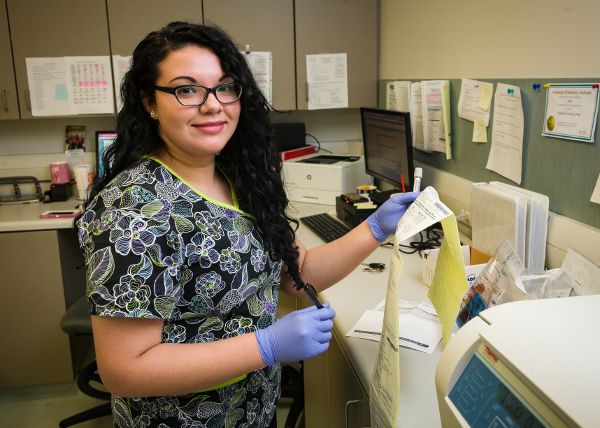Melanoma is a certain type of skin cancer that typically originates in specific skin cells called melanocytes, which are responsible for pigmented coloring of your skin. Most melanoma tumors are brown or black because they still produce melanin, but some can appear pink, tan, or sometimes white in color. Melanoma can develop anywhere, but is commonly found on the chest and back in men and legs in women.
While melanoma is less common than other types of skin cancer, it is more dangerous because it is more likely to spread to other areas of the body if not detected early.
Risk Factors
Exposure to UV rays, including those from the sun and tanning beds, is one of the biggest risk factors for melanoma. Patients who have moles are more likely to develop melanoma than those who do not have any moles. Melanoma is much more common in white people with fair skin, red or blonde hair, blue or green eyes, and those with freckling. Risk of melanoma is also higher if you have a first degree relative who has had melanoma. Other risk factors include having a weakened immune system, being older in age, and being male.
Detection and Diagnosis
Through a self skin exam, or a skin exam by a medical professional, any changes in spots or moles on the skin should be noted, especially when moles change in size, shape, or color. Using the ABCDE tool for changes in moles can be helpful:
A – assymetry, one side of the mole is different from the other
B- border, edges are irregular
C- color, varying colors on the mole
D- diameter, larger than 6mm
E – evolving, or changing often
A skin exam by a dermatologist is the best way to detect skin cancer early. The dermatologist will inspect the site in concern and determine whether or not a biopsy is needed. There are a variety of biopsy types and your dermatologist will recommend the best option. The biopsy sample will be reviewed by a pathologist and any findings will be shared with the care team. Additional imaging may be necessary, such as xays, CT scan, MRI, or PET scans.
Treatment
Treatment options can vary widely, depending on the specific type and staging of melanoma. Often times, surgery is used to completely remove the skin cancer and find clear margins. For some cases, a specialized skin cancer removal surgery called Mohs may be indicated. Removal of lymph nodes near the melanoma site may also be part of the surgical plan.
Other types of treatments commonly used for melanoma include:
- immunotherapy
- targeted therapy
- chemotherapy
- radiation
Prevention
While there is no sure way to prevent melanoma, there are a few things you can do to reduce your risk:
– reduce exposure to UV rays by staying in the shade, avoiding the sun during peak hours, wearing a wide brimmed hat, and using proper sunscreen
– avoid using tanning beds
– watch for abnormal moles and perform regular skin exams







